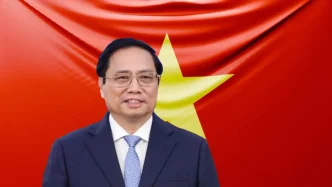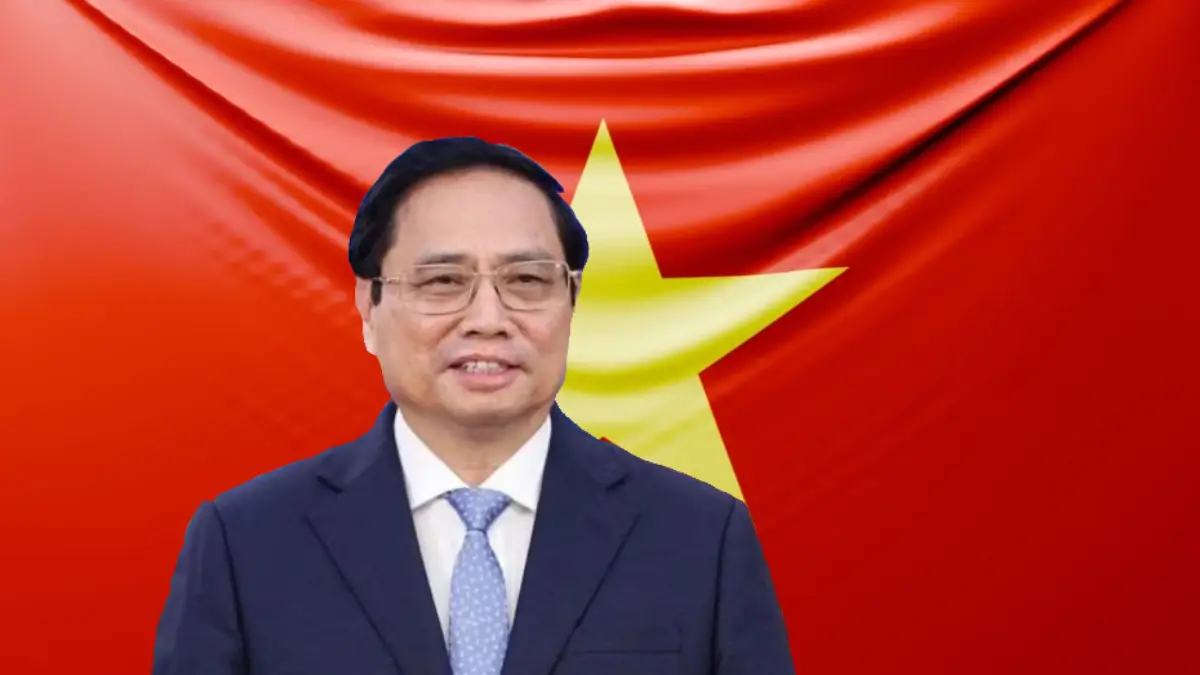In a significant step toward deepening bilateral relations, Vietnamese Prime Minister Phạm Minh Chính met with Chinese Premier Li Qiang on the sidelines of the expanded BRICS summit in Rio de Janeiro, Brazil, on July 7, 2025. The meeting underscored a mutual commitment to advancing the Vietnam-China comprehensive strategic cooperative partnership, with discussions focusing on high-level exchanges, economic collaboration, and critical infrastructure projects.
Building on Recent Engagements
The encounter in Brazil follows a series of high-level interactions between the two nations, reflecting a sustained effort to bolster ties. During the meeting, Prime Minister Phạm Minh Chính expressed gratitude for the warm reception he received during his recent visit to Tianjin, China, in late June 2025, for the World Economic Forum (WEF)’s 16th Annual Meeting of the New Champions. He also congratulated China on the successful organization of the event, highlighting the positive momentum in bilateral relations.
Phạm Minh Chính emphasized Vietnam’s high regard for the diverse and substantive outcomes of recent exchanges, which have significantly advanced the relationship between the Communist Party of Vietnam (CPV) and the Communist Party of China (CPC), as well as between the two countries at large. He took the opportunity to convey warm greetings from key Vietnamese leaders, including General Secretary Tô Lâm, State President Lương Cường, and National Assembly Chairman Trần Thanh Mẫn, to their Chinese counterparts, including General Secretary and President Xi Jinping.
In response, Premier Li Qiang reciprocated with regards from President Xi to Vietnamese leaders. He expressed appreciation for the respectful and ceremonious welcome extended to the Chinese leader during his visit to Vietnam in April 2025. Li also praised the positive trajectory of bilateral ties, affirming China’s commitment to translating high-level agreements into tangible results.
A Shared Vision for Cooperation
Both leaders reiterated their dedication to implementing the common perceptions reached during recent engagements, aligning their efforts with the six major orientations that define the Vietnam-China partnership. This framework, established through years of dialogue, prioritizes mutual respect, strategic autonomy, and cooperation across multiple domains. The agreement to maintain frequent high-level exchanges signals an intent to keep communication channels open at the highest levels of government and party leadership.
Central to the discussions was the expansion of cooperation in economy, trade, and investment—areas critical to both nations’ development agendas. Vietnam and China, as neighboring countries with intertwined economic interests, have long recognized the importance of strengthening these ties. The leaders also explored opportunities to deepen collaboration in science, technology, and innovation, sectors that are increasingly vital in the global economy.
Premier Li stressed China’s willingness to work closely with Vietnam to achieve concrete outcomes from their shared commitments. This includes enhancing strategic connectivity, a cornerstone of their partnership, which aims to facilitate greater economic integration and people-to-people exchanges. The emphasis on translating high-level consensus into actionable projects reflects a pragmatic approach to diplomacy, one that seeks to deliver measurable benefits to both populations.
Railway Connectivity: A Priority Project
A key highlight of the meeting was the focus on infrastructure cooperation, particularly railway connectivity. Prime Minister Phạm Minh Chính proposed that China prioritize and accelerate collaboration on the Lào Cai-Hà Nội-Hải Phòng standard gauge railway, a project with significant implications for regional trade and logistics. He expressed hope that construction could commence as early as December 2025, underscoring the urgency of the initiative for Vietnam’s economic development.
The proposed railway, which would connect northern Vietnam’s border regions with its key port city of Hải Phòng, is envisioned as a vital link in the broader network of infrastructure projects under discussion between the two countries. Such connectivity is expected to streamline the movement of goods and people, reducing transportation costs and boosting trade efficiency. For Vietnam, this project aligns with its broader goal of modernizing its infrastructure to support rapid industrialization and urbanization.
Premier Li affirmed China’s readiness to fast-track strategic connectivity initiatives, including standard-gauge rail links. This commitment builds on China’s extensive experience in high-speed rail development and its interest in exporting this expertise to neighboring countries. The railway project, if realized, could serve as a flagship example of Vietnam-China cooperation, symbolizing the practical outcomes of their strategic partnership.
Context of Vietnam-China Relations
The meeting in Rio de Janeiro takes place against the backdrop of a complex but evolving relationship between Vietnam and China. Historically, the two nations have navigated periods of tension, particularly over territorial disputes in the South China Sea, alongside moments of robust cooperation driven by shared political ideologies and economic interests. In recent years, both sides have sought to emphasize the latter, focusing on mutual benefits while managing differences through dialogue.
Vietnam, under the leadership of the CPV, has pursued a foreign policy of “bamboo diplomacy” balancing relations with major powers while safeguarding its sovereignty and independence. Engagement with China, its largest trading partner, remains a critical component of this strategy. Bilateral trade between the two countries reached significant heights in recent years, with Vietnam exporting agricultural products, electronics, and textiles to China, while importing machinery, raw materials, and consumer goods.
For China, Vietnam represents an important partner in its Belt and Road Initiative (BRI), a global infrastructure and trade strategy aimed at enhancing connectivity across Asia, Europe, and beyond. Projects like the proposed railway align with BRI objectives, offering China an opportunity to extend its influence in Southeast Asia while supporting Vietnam’s development goals. However, Vietnam remains cautious, ensuring that such cooperation does not compromise its autonomy or lead to over-reliance on Chinese investment.
Regional and Global Implications
The discussions at the BRICS summit also carry broader implications for regional dynamics in Southeast Asia and the global geopolitical landscape. The BRICS framework—comprising Brazil, Russia, India, China, and South Africa, with recent expansions to include other emerging economies—provides a platform for countries like Vietnam to engage with major powers on issues of global economic governance. Vietnam’s participation in the summit, though not as a full member, reflects its growing international stature and interest in shaping multilateral dialogues.
Strengthening ties with China through this forum allows Vietnam to amplify its voice on issues such as trade liberalization, climate change, and technological innovation—areas where BRICS countries often seek to counterbalance Western dominance. At the same time, Vietnam’s engagement with China within BRICS underscores its pragmatic approach to diplomacy, leveraging such platforms to advance national interests while fostering regional stability.
For China, the partnership with Vietnam serves as a counterpoint to its more contentious relationships elsewhere in the region. By prioritizing infrastructure and economic cooperation, China aims to project an image of a constructive partner, countering narratives of assertiveness in the South China Sea. The railway project, in particular, could become a tangible symbol of this cooperative spirit, provided both sides navigate the logistical and financial challenges of implementation.
Challenges and Opportunities Ahead
While the commitments made during the Rio de Janeiro meeting are promising, translating them into reality will require sustained effort and coordination. Infrastructure projects like the Lào Cai-Hà Nội-Hải Phòng railway face numerous hurdles, including funding, technical specifications, and alignment of national priorities. Vietnam will need to ensure that such projects deliver equitable benefits to its citizens, avoiding the debt traps that have plagued other countries engaged in large-scale Chinese-backed initiatives.
Moreover, public opinion in Vietnam remains sensitive to deepening ties with China, given historical animosities and ongoing maritime disputes. The Vietnamese government must balance the economic advantages of cooperation with the need to address domestic concerns about sovereignty and national identity. Transparent communication about the terms and benefits of projects like the railway will be crucial in maintaining public trust.
On the Chinese side, delivering on promises of accelerated cooperation will test its ability to align bilateral initiatives with broader regional strategies. China’s willingness to prioritize Vietnam’s infrastructure needs could set a precedent for its engagement with other ASEAN countries, potentially reshaping perceptions of its role in Southeast Asia.
Looking Forward
As Vietnam and China continue to build on their comprehensive strategic cooperative partnership, the outcomes of their collaboration will likely resonate beyond their borders. The railway connectivity project, if realized by the ambitious December 2025 timeline, could herald a new era of economic integration in the region. Yet, the path forward remains fraught with challenges, requiring both nations to navigate geopolitical sensitivities and domestic priorities with care.
For now, the meeting between Prime Minister Phạm Minh Chính and Premier Li Qiang at the BRICS summit stands as a testament to the potential of sustained dialogue and shared vision. Whether this potential translates into lasting progress remains an open question, one that will shape the trajectory of Vietnam-China relations in the years to come.















